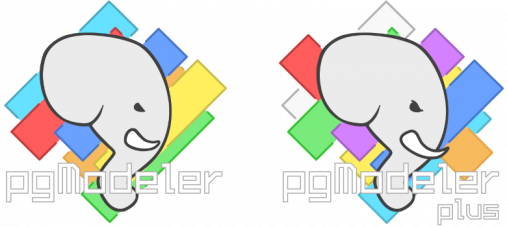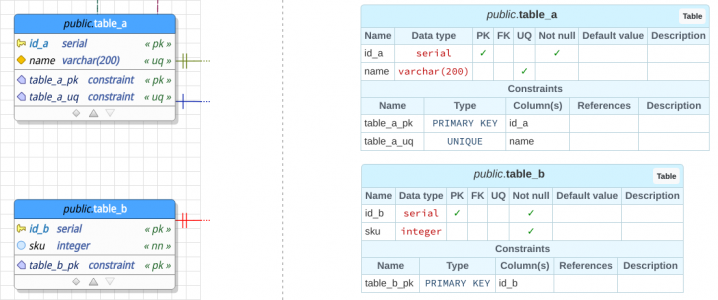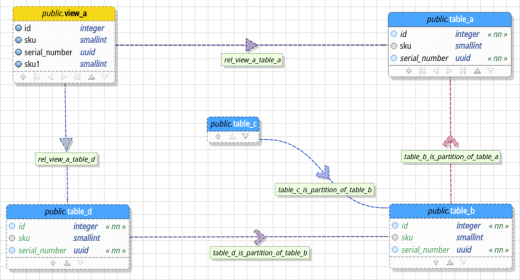pgModeler 2.0.0-alpha is finally here!
The beggining of a new era for the project.
2025

The pgModeler 2.0.0-alpha release introduces significant improvements aimed at enhancing usability, flexibility, and maintainability. One of the most notable changes is the migration of the build system from qmake to CMake. The user interface has also received a major update. While still a work in progress, this alpha version introduces a refreshed logo, updated icon colors with a flatter and more colorful style, and the integration of the configuration form and core tools — diff, import, export, and fix — directly into the main window. The diff tool has been enhanced with a new model-to-model comparison mode, allowing offline comparisons between two loaded database models and generating the corresponding SQL diff for later application. Import and export tools have undergone similar refinements. Components have been reorganized for a cleaner interface, allowing users to freely choose which models to operate on, rather than being restricted to the active model. This ensures a smoother and more intuitive experience across all data handling operations. For more details, please read the full post; don't skip it!
The first alpha release of 0.9.3 is ready!
This time more focus on polishing than new features.
2020
After bringing some important improvements on 0.9.2 it's time to start another round of polishing all features available in pgModeler. This way, 0.9.3 development will be more focused on improvements of what already exists than the creation of new features. Of course, this will not prevent that some new functionality on the tool can be implemented, they will be just less prioritized. This release brings some requests related to database model design, which includes, bulk objects' renaming, multiselection on object finder and model objects widget and the introduction of the objects' Z-stack handling, a.k.a, "send to back" and "bring to front". Several bugs were fixed which were mainly related to reverse engineering and diff processes, but some other small bug fixes were provided over all parts of the tool. There were some important changes too, many of them related to code refactoring that the users will not notice but will improve code maintenance since it reflects on fast response on bug fixes and new features. The deployment processes were improved too, the code now compiles without problems in Qt 5.14.x as well in previous Qt versions. Additionally, the installers were almost all rewritten in order to provide a better experience for users who depend on binary packages. More details on the full post!
pgModeler 0.9.2 stable is here for my pride and joy!
Minor fixes, new feature and the introduction of the first plugin.
2019

This is the end of a long development cycle that started still in May 2018 when the stable 0.9.1 was released. Composed by 84 new features, 134 fixes, and 146 changes in total this last development iteration was intended to be just a fine-tuning of what was constructed in alpha and beta versions including only a new relevant feature which allows one to generate data dictionaries in HTML format from database models. The mentioned feature was a request from many users that needed an extra form of documenting their databases. The data dictionary generation feature is still considered experimental despite being a relatively simple functionality. So, there is always room for improvement. Additionally, this launch marks a new advance of this project: the introduction of the first third-party plugin. I'll explain everything in the full post. Don't miss it!
Yeah! pgModeler 0.9.2-alpha1 is ready bringing lots of news!
Table partitioning, canvas layers, view's columns and much more.
2018

Finally, after four months, we have a new version out of the oven! This one has A LOT of changes that range from several code refactoring and performance improvements to the introduction of new interesting features like table partitioning and canvas layers. First, let's talk about the changes and improvements. The objects drawing operations received a good set of patches making it a bit faster and less memory consuming. The overall performance of the reverse engineering was improved which, in consequence, have enhanced the diff process performance as well. In the new features side, we added scene layers which goals is to introduce a new level of visual segmentation of graphical objects. Another new feature created is the support to view columns that are deduced from the relationships between these objects and the tables. In the design view, in order to be more close to the new features introduced by PostgreSQL 10+, pgModeler is now capable of handling declarative table partitioning. Besides, tables and views can have their attributes paginated or even collapsed to minimize the area occupied by them making big objects easier to visualize. Finally, about the bug fixes, several crashes were eliminated making the tool more stable for different usages, the reverse engineering received some patches so it can import correctly user-defined types in form of arrays and many others. This post will try to explain some of these changes and new features in details. Check it out!